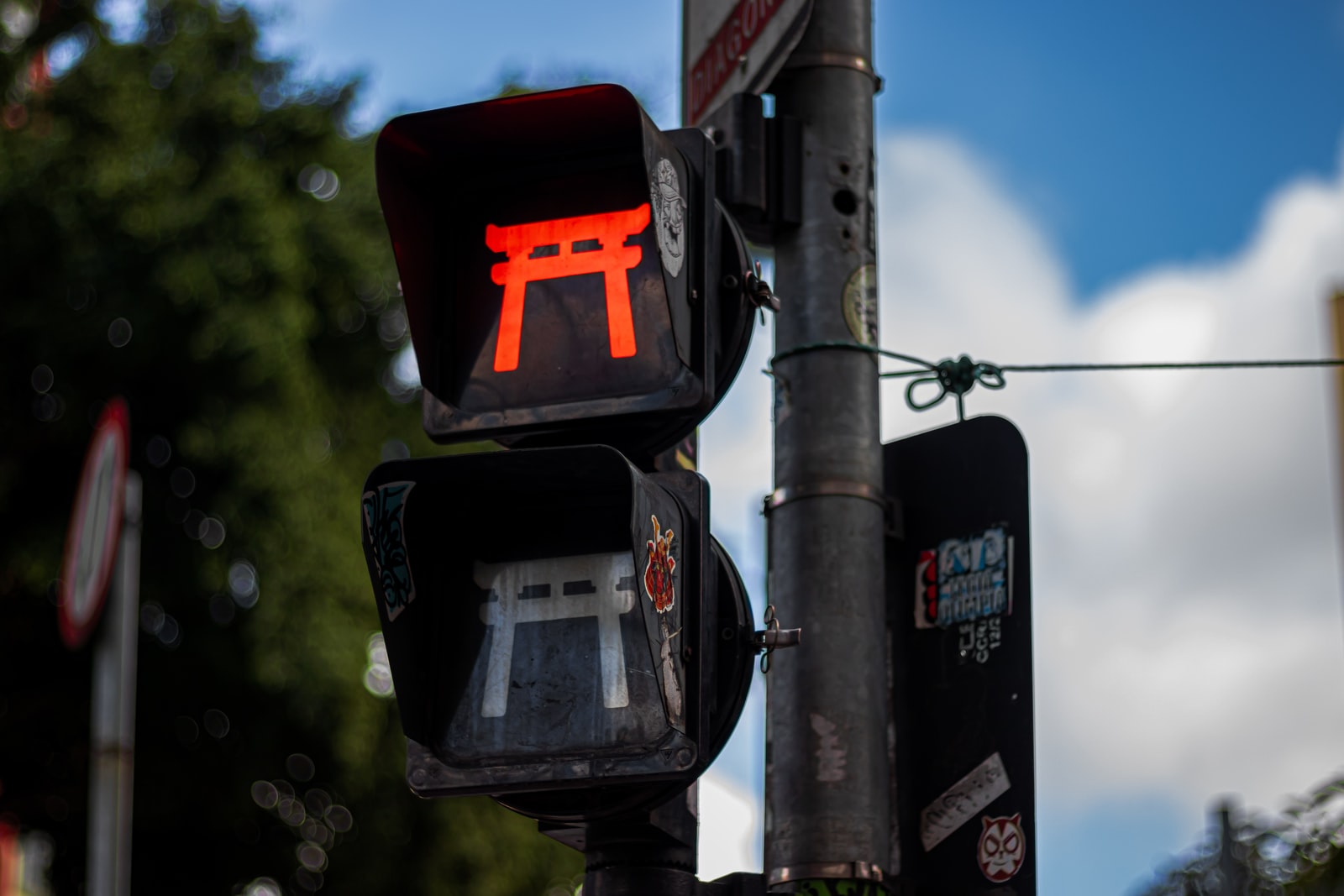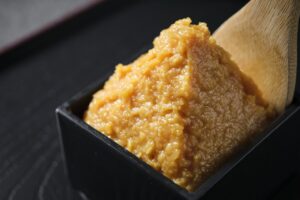Deconstructing Creativity: ‘Japas’ Craft Beer, Created by a Trio of Female Japanese-Brazilians

Brazil is home to the world’s largest Japanese populations outside of Japan, numbering about 1.5 million people. The Japanese Brazilians are either 1) Japanese people from Japan who immigrated to Brazil and then became naturalized Brazilian citizens; or 2) those born in Brazil with varying degrees of Japanese ethnicity.
There were many reasons why there was an influx of Japanese people coming to Brazil. Back in 1868, Japan was suffering from poverty and high unemployment during the Mejii Period (1868-1912). Consequently, the number of Japanese wishing to emigrate increased. Many of them were dreaming of working abroad to save money and eventually return to Japan. However once they arrived, many others decided to stay permanently, making Brazil their home.
During this same period, Brazil was desperately looking for workers since they abolished slavery in 1888. The country needed manpower to replace the freed slaves who worked on the coffee and sugar cane plantations. The Japanese government even started a marketing campaign to encourage people to come to Brazil.

The first group of Japanese immigrants arrived in Brazil in 1908. A Japanese ship named Kasato-Maru docked at the port of Santos, and landed 781 immigrants.
2008 marked the 100th anniversary of Japanese immigration to Brazil. The young Japanese Brazilians, who represent the 3rd and 4th generations, are better educated than the preceding generations. In comparison to their parents, they are free to choose what to study, where to live, and who they decide to marry. Their views are generally more diverse and their choices can tend to be more innovative.
Making It! The Japanese-Brazilian Female Success Story
“Japas,” a brewery based in São Paulo, Brazil, was founded by three Japanese-Brazilians: Fernanda Ueno, a brewer at a craft brewery in Ribeirão Preto, Brazil where she was born and raised; Maíra Kimura, who co-founded one of the first contract breweries in Brazil; and Yumi Shimada, who had extensive experience in designing beer labels and beer industry magazines. They were instantly connected because of their Japanese heritage and being beer aficionados. They began to brew beer using American Pale Ale as a base and adding Japanese ingredients.
After creating the wasabi-flavored beer, which eventually became their main product, they immediately received an offer from a brewpub in Sao Paulo to sell it commercially. Now their beer is sold at bars, restaurants, and liquor stores in Europe and the United States. As they approach the 8th anniversary of founding “Japas,” Fernanda says, “It was a big challenge to develop the market as all-female brewers in the male-dominated beer industry.” Their next goal is to sell their beer in Japan and open a tap bar.
The appeal of “Japas” is not about recreating or reverting to Japanese traditions. It harnesses the experience and sensibility that only a Japanese-Brazilian can offer and reconstructs them with Japanese and Brazilian characteristics. Using American Pale Ale, which originated on the West Coast of the United States, “Wasabiru” has a refreshing flavor of wasabi. “Shukurimu (Cream Puff)” uses New England IPA as the base with a hint of vanilla and green tea. The company sells beer with a variety of flavors and aromas that use Japanese ingredients. We asked the founders about the story behind bringing “Japas” to life and their aspirations for the brand.
—— First, I want to ask about the story behind your brand name? On the “Japas” website, it says you want to destigmatize the term “Japa” or “Japas” so that you can use it with pride and show who you are as Japanese-Brazilians.
Maíra Kimura: The name “Japas” could be interpreted with negative connotation although it’s not a bad word. One thing is that people tend to generalize all Asians and call them “Japa” here in Brazil, even if they are Chinese or Taiwanese. Older people usually don’t want to be called that way. However, we wanted to say up front that we are “Japas” and let the world know that we can call ourselves that way —that it is, in fact, our entitlement as Japanese- Brazilians. We received a couple of complaints from the older generation, whose parents came to Brazil after World War II and were subjected to discrimination. They didn’t want to be called “Japas” as it was not a good word in those days. Nowadays, there are groups made up of people with Asian heritage and they get the point. They think that it’s good to celebrate the heritage and be proud of it.
Yumi Shimada: We know the term may not get accepted in the United States. But here in Brazil, we had a big discussion and believed that we could change the meaning of the name. In Brazil, we tend to shorten people’s names. For example, Julia becomes “Ju.” The same thing happened with Japanese, and “Japa” is a shortened version. I want “Japas” to be a fun way to be reminded of our Japanese heritage. We want to use it with pride and give a different meaning to the word.
——The package design is iconic. You transformed Japan-related materials by infusing pop art style and cheerful colors. What are some of your considerations and intentions behind these design techniques? Viewing your beer flavors and package, I wonder how you made your creative choices.
Fernanda Ueno: The concept comes first and then we choose the fruit, and beer style. Yumi comes up with the art and explores a way to tie all the elements together. That is an important part of the creative process. We are not going to create something just for the sake of it. Each beer exists for a good reason.
Yumi: Each beer has a different history. Sometimes it’s about a special occasion, or it’s about a concept like kawaii, which is a good concept and we like it a lot. We also try to come up with a special fruit to feature. Our output depends on the moment we create something and we want people to understand that we are trying to infuse aspects of the Japanese culture as well as the Japanese-Brazilian culture. In Brazil, we have many Japanese products, but they are all quite traditional. We want to show people that we are creating something more contemporary with good visual design.
——What’s the Japanese-Brazilian creative community like? Is there a notable movement within the community now?
Maíra: The Japanese-Brazilian community is all connected but I wouldn’t say that there is a specific movement at this moment. One thing that we started in 2018 was a fair called Kurafuto. The first one was held in a big museum in São Paulo. The goal was to bring the Japanese descendants from the creative community together to showcase their products. We presented different kinds of crafts, clothes, ceramics and so on.
Fernanda: The Japanese influence was the key element for this fair. We are also looking for the right kind of people in the community to work together. This year, the Kurafuto is happening at the end of June, which will coincide with the anniversary of the Japanese immigration.
Yumi: We are open to collaboration with outside partners. We also collaborate with other brewers. We hope to work with a diverse group of Japanese descendants. That way, we can embed inputs and viewpoints from other Japanese descendants into our creative process.
——On Japas Facebook page, I learned how your families came to Brazil. What were your thoughts and impressions when you first heard about family history?
Fernanda: When we started “Japas,” the best part was to go deep into our family history. I didn’t know much about my grandfather. We had no idea how he came to Brazil, at which age, with whom. The process involved my family and cousins. Everyone became interested in it. We found all the relevant documents online where the original documents were scanned. It was touching for me to see my grandfather’s name along with other family members on the original documents. It had the dates and the name of the ship that they traveled on to come to Brazil. It made me feel much closer to my family and we felt proud of our roots. Especially the beer that we make celebrates our family history and we feel happy and proud.
Maíra: When I was growing up, I was close to my oba-chan (grandma) as she helped raise me. She used to speak to me in Japanese when I was little. I understand a little bit of Japanese but I don’t speak it at all despite taking four years of Japanese classes. We still grew up cherishing Japanese heritage at home. I used to interview my oba-chan about how our family history. It’s actually on a tape and I have to find it. My oba-chan came to Brazil in my great-grandmother’s belly. She was already pregnant with her. Although she grew up in Brazil her entire life, she was very Japanese. She only spoke Japanese most of her life and learned to speak Portuguese later. I learned a lot from her. I cried when I first saw the papers about my family. They didn’t have an easy time. My grandmother’s family came to Brazil after they lost everything in the earthquake in 1923. Their house in Tokyo was burned down. They came to Brazil in search of a better life but ended up working in the field, which was not easy. I learned a lot as I dug into my family history. I cherish my family history. I now have a better understanding of the context. It’s a personal story and enforces my understanding of our origin. In that sense, “Japas” has strong personal elements and reflects our history. It is very true for us.
Yumi: I didn’t have extensive exposure to Japanese culture when I was growing up. I grew up in the suburbs and wasn’t surrounded by people of Japanese heritage. All of my friends were either black or white. I didn’t know anything about my grandfather from Japan, who died when I was six years old. The Japanese part disappeared. I became aware of my Asian heritage when I was about 20 or 21 years old. With “Japas,” things have changed as it became a search for me to find out who I am. When I traveled to Japan, I met many people with mixed heritage. It was cool to be able to discover that. Through “Japas,” I was able to explore my Japanese heritage. It was a big deal.
——Are there certain traditions or customs that you preserved as Japanese-Brazilians?
Fernanda: My family is not very traditional. My grandfather also passed away when I was four. I had some uncles, who moved to Japan and my cousins are there. One of the things we kept in the house is the Japanese food. We ended up mixing Japanese food with Brazilian food.
Yumi: Since I didn’t grow up with anything Japanese, I am trying to bring Japanese tradition into my life. For example, we have onigiri (rice balls) along with churrasco, a Brazilian barbecue. I also love to eat Japanese rice with beans. In Brazil, beans are a staple and are highly nutritious. It’s good to mix with anything. Food plays an important role.
Maíra: For us, it was food, too. I knew that we ate different types of food at home. As a child, I understood that we were not a traditional Brazilian family. My father always loved to cook curry so I grew up eating it. My father fishes and makes sushi and sashimi at home. When I was little, I didn’t like eating raw fish, but now I love it. My grandmother used to tell me a lot about Japan and her family. My father also taught me a lot about Japan.
——Someone said, “identity is multi-faceted and is always affected by the surrounding environment.” It’s not always about the country where your parents were born or your race. We live in a world filled with diversity. What are your thoughts on your identity?
Maíra: We call ourselves Japanese-Brazilians. We know that we are not Japanese and don’t know the culture fully as we were not born there. Three of us went to Japan several times to learn about the culture and the country. As Japanese-Brazilians, in addition to our Japanese heritage, we have heritage from other countries. We are mixed. I have Portuguese heritage, too. We are a portrait of everything that is going on in this country. Of course, we are mostly influenced by Brazilian culture. But we cherish the fact that we are Japanese-Brazilians as we are in love with Japan.
Yumi: In terms of the Japanese heritage, we belong to the third generation. Our points of view are different from the older generation. We kiss and hug people. In Japan, when we do that, the Japanese are taken aback.
Fernanda: When I was in Japan, I felt emotional as I could see and feel everything that people used to tell me about. We have the “Japanese-ness” built-in ourselves and I certainly felt more aware of my mixed heritage. The things I felt had in common were my way of thinking, living and communicating. There are moments when I prefer to be silent, which is not very Brazilian. In Brazil, we are open and we talk a lot.
Brazilians don’t have a face since we are very mixed. When I travel outside of Brazil, people think that I am Japanese and my husband is Portuguese. And we say that we are Brazilians. On our beer label, we put our family names: Shimada, Kimura and Ueno. The intention was to celebrate our lineage as “Japas.”
Brewers Maíra Kimura, Yumi Shimada and Fernanda Ueno are three Brazilian ‘Sansei’ (Third generation Japanese who were born in a new country of residence). Their first beer, ‘Wasabiru’ – an APA with Wasabi – was launched in 2014. Since then the three talented brewers presented numerous beers, all of which are brewed with Japanese inspiration and ingredients. Paving the way for women in the beer industry, their unique, exotic and delicious beers are on a constant rise, with ‘Japas’ already a familiar name in the thriving craft beer scene in Brazil.
Originally published at https://tokion.jp on July 18, 2022.







 Instagram
Instagram